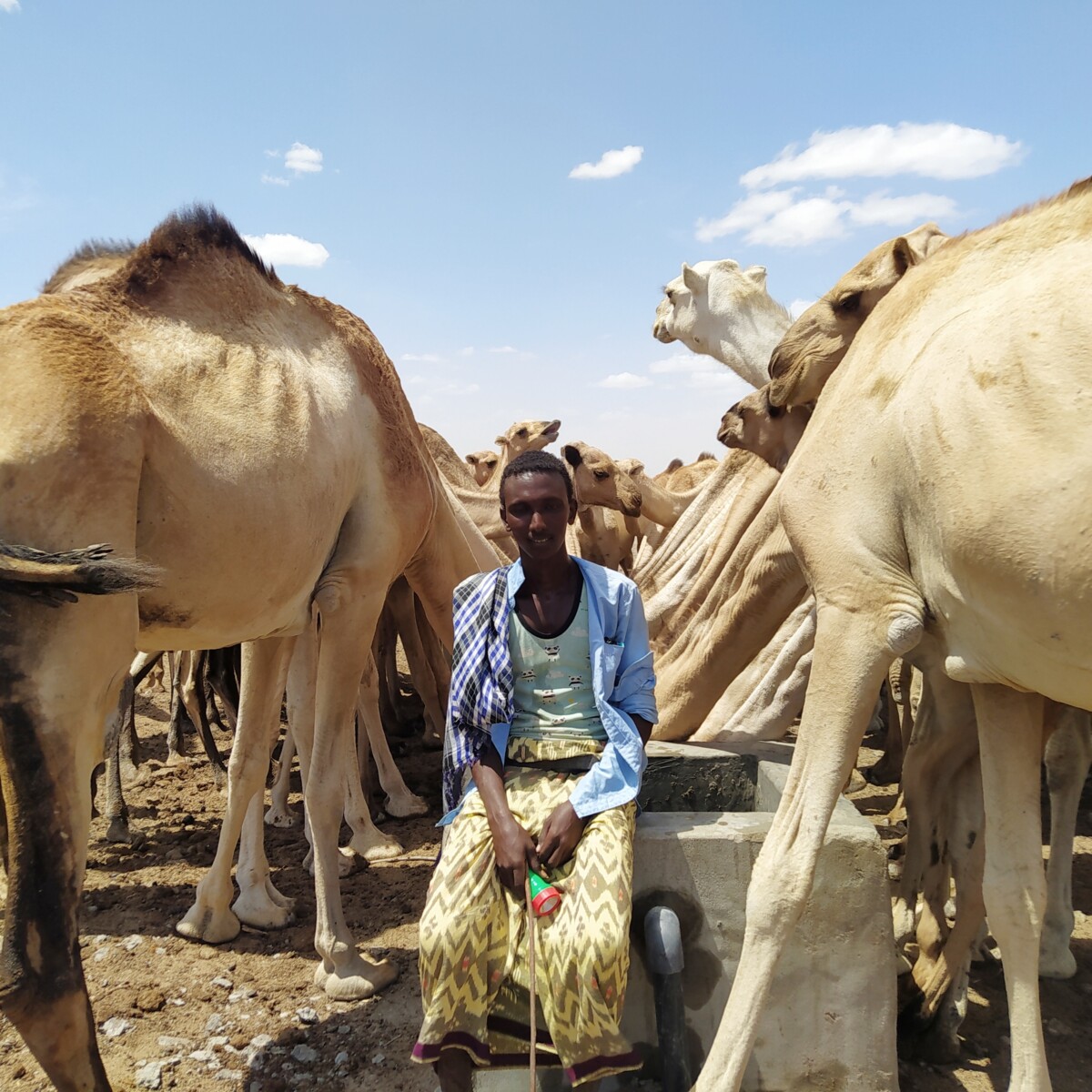
This month, we celebrated International Women’s Day by looking back at some of the incredible women who are beating the odds to overcome poverty through our projects. When deciding how a project will be run, we always consider how we can ensure women are involved at every level—we don’t just want their participation, we want their leadership and their expertise.
Why focus on women?
Women are disproportionately affected by poverty and that poverty is often associated with a greater risk of violence, worse health outcomes and, as global warming continues unabated, it will be women who are disproportionately vulnerable.
If you are a woman in Kenya, where our camel milk projects take place, you are more likely to be unemployed; if you are employed, you are more likely to fall below the international poverty line and, employed or not, you remain 6.3% more likely to currently be facing severe food insecurity, a particular danger for pregnant people. With Northern Kenya still reeling from its worst drought in decades (while in the South-West, 40,000 people have been displaced by flooding), these inequalities are likely to be more acute in the regions we work. To illustrate how climate change remains a gendered issue, there is already evidence that gender-based violence has been on the increase precisely because of the drought.
Therefore, any action taken to alleviate hardship must have specific provisions to address the severity and uniqueness of the challenges faced by women. This is why in our camel milk project, we make sure women receive training in small business management and milk handling skills so that they can independently manage their own businesses and build status within their communities—that independence expands the earning potential of the woman’s family and builds their resilience to climate-related shocks, like drought.

Why Camel Milk?
Camel milk is vitamin and protein-rich, with a higher density of nutrients than cow’s milk. Through camel milk, we have been able to support 38,000 households to increase their incomes, with an average eight-fold income increase, as well as improving nutrition for over 10,000 children under the age of five.
As both a commodity and a source of sustenance, camel milk some surprising opportunities for women and may be used as a case in point for how environmental, gendered and poverty-alleviating actions may be inter-woven.
Women play a critical role in the camel milk value chain. A common division of labour among pastoralists is for the men to handle and herd the livestock, while the women fetch water, prepare pasture and trade the milk at market.
However, since camels are less labour-intensive to herd than other livestock, it has been suggested that they put less of a burden on women. As a Borana woman explained in a study of camel milk traders in Northern Kenya, ‘Camels have less work for women. Usually we cut grass for cattle calves. Camel calves can go with their mothers. They don’t need forage or watering. So the camel is less work.’ That same study also found that the reduced workload freed up women to help out with traditionally masculine tasks, creating new forms of cooperation between husband and wife: ‘camel work is something that we do together. Camels can’t be managed by one person only, so … the man and woman have to work together.’

We have seen in our own projects how the success of camel milk can dissolve this traditional division of labour. A story we often share bares repeating on this point: when Halima, a mother of seven from Garissa County, decided to start a camel milk business, the family had no source of income and as a woman, Halima was treated with prejudice and had little influence in the community. Her husband was also very reluctant to allow her the time to run the business, despite being out of work himself.
But Halima persisted. She started her business by saving the very little money she had, with which she bought three litres of camel milk. She sold this making a small profit. Very slowly and gradually she progressed until, by the end of the first six months in business, she was buying and selling nine litres of camel milk a day at a small profit.
The profits from milk sales grew. Halima was soon able to meet the food needs of her family and no longer had to rely on social support systems. But also, as her milk business progressed, her husband started appreciating Halima’s efforts and began to support her. Halima is now the proud owner of five camels and has gained respect in her community.
By supporting camel milk traders, women can earn a sustainable income that contributes to their households’ economic stability, financial independence, and social status.
The success stories speak for themselves. One woman we spoke to, Saharla, was a milk bulk-trader, buying 500 litres of milk daily, five times what she was able to handle before the Camili project. ‘Personally,’ she told us, ‘I have educated my two sons up to university from this milk business and I’m not going to stop selling milk any time soon.’
